Integrating Mobile Data Collection with Satellite Imagery
Nicholai Lidow (Premise)
- Remote sensing and mobile data collection
- Detect many types of economic activity
- Less than 25km between Siera Lione and Liberia near the border, but the patterns of crops are changing
Nicholai Lidow (Premise)
- Remote sensing and mobile data collection
- Detect many types of economic activity
- Less than 25km between Siera Lione and Liberia near the border, but the patterns of crops are changing
- No matter how good the sensors get, there are things you cannot see fro the satellite (ex. indoors, cloudy, higher frequency, greater resolution)
Example: India drought
- Variation in cold storage infrastructure and strategic grain reserves had bigger impact on prices than drought itself
- Collecting rapid information as needed
Example: Indonesia
Global coverage of mobile data
- Currently in 30 countries, expanding to 140 countries in 2 years.
- Geotagged photos, getting the data from contributors and partners
- Data update by untrained contributors- will judge over time, teams looking with human insights to potential data quality issues.
- Recruiting contributors via job boards, SNS, partner with local organizations, sending people in if needed.
- Geotagged photos, getting the data from contributors and partners
- Data update by untrained contributors- will judge over time, teams looking with human insights to potential data quality issues.
- Recruiting contributors via job boards, SNS, partner with local organizations, sending people in if needed.
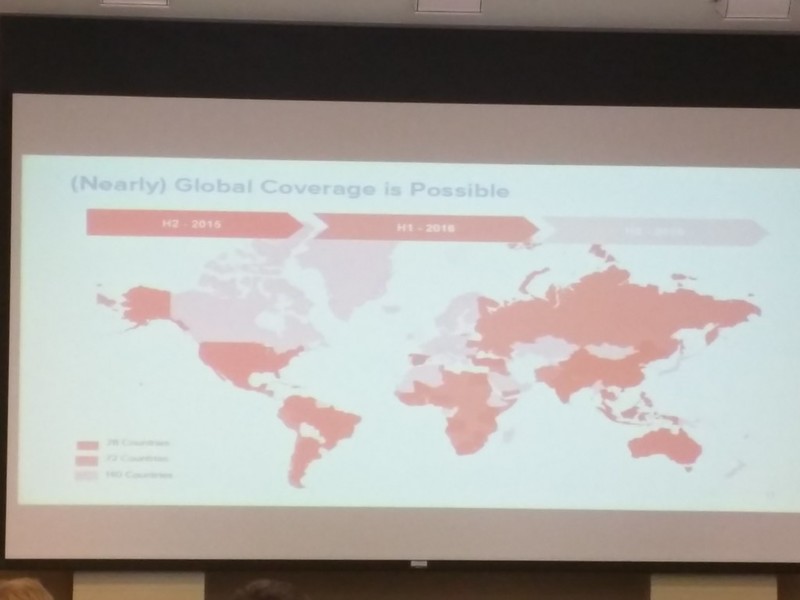
- Creating a feedback loop- global network of mobile data collection and standardized data stream, analytics and providing additional data to improve forecasts and answer questions.
Using Telecom Data for Social Good
Daan Struyven (Real Impact Analytics)
- Using big data to help policy makers and aid workers foster the social public good and maximize impact
1. Improving the response to disease outbreaks
- Pandemics killed, and can kill millions of people
- Bill Gates pushing research
- Lessons from Ebola
- monitoring could have been better
- medical and supply
- quarantines (quarantine rules were completely ad hoc)
- Developing 3 apps: disease monitoring app, medical supply app and quarantine app

2. Detect and tackle food crises through better monitoring
- 800 million people are under-nourished
- Cause is food demand by low and volatile income / supply (volatile climate, crop quality)
- Income shocks and nutrition ($2/day)
- Food security monitoring
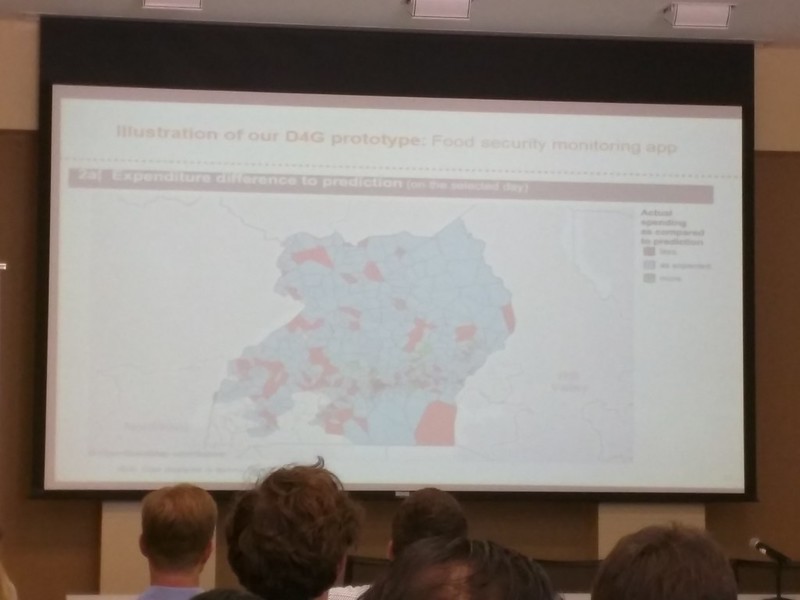
3. Building broader and open ecosystem to co-design
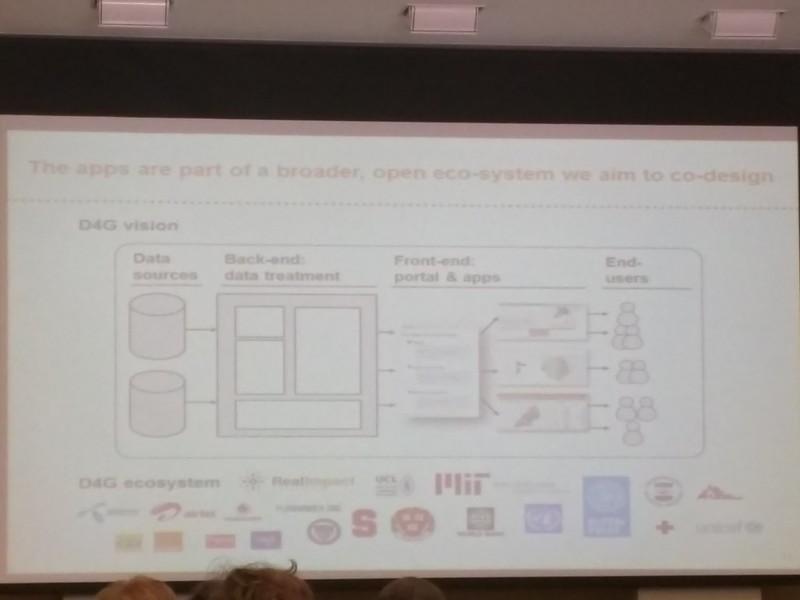
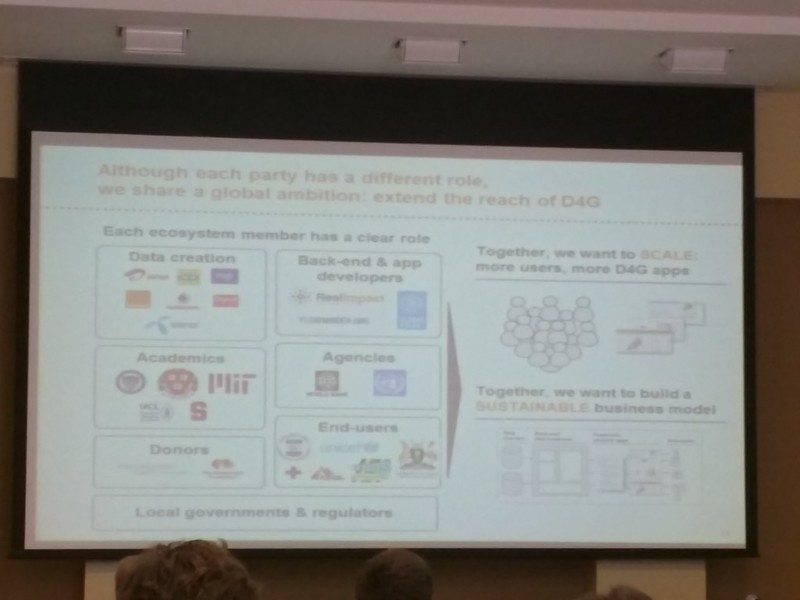
Q: How do you get data from mobile companies?
A: Compensating for cost, changing culture of data sharing to use it for public goods
Disclaimer: The opinions expressed here are my own, and do not reflect those of my employer. -Fumi Yamazaki
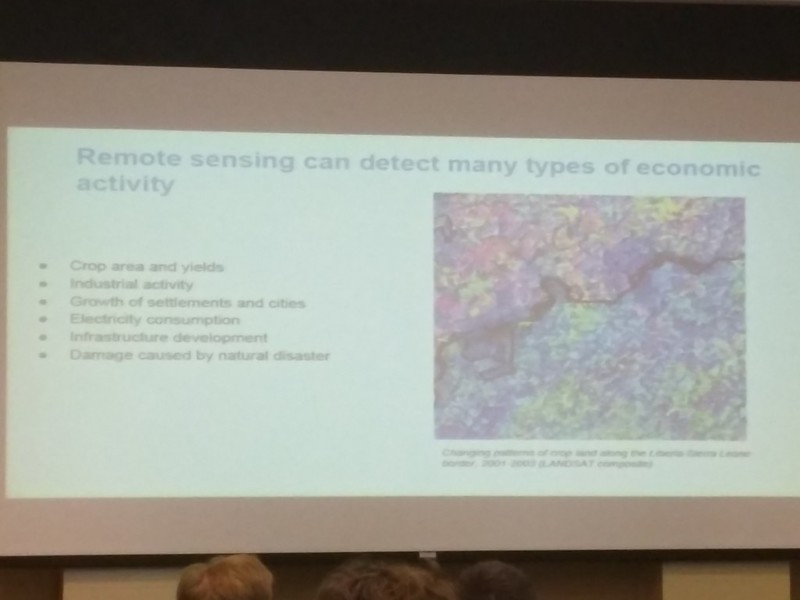
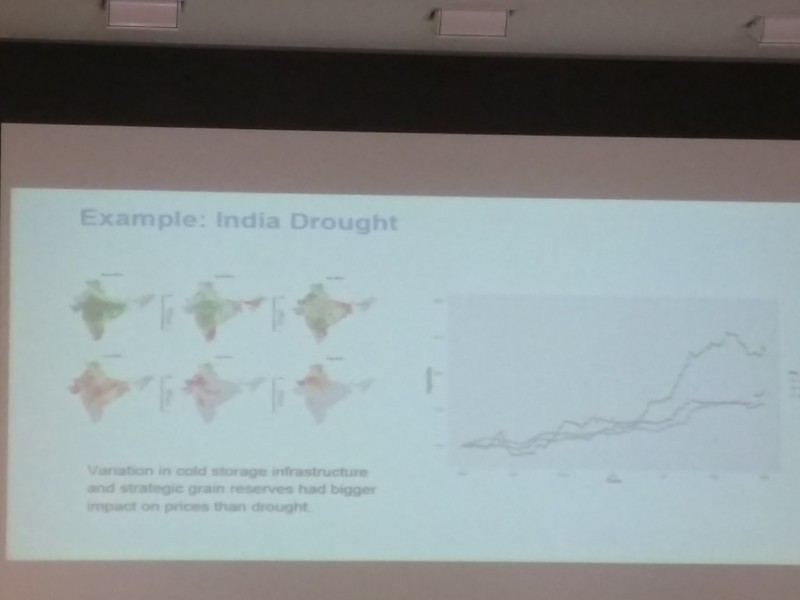
0 件のコメント:
コメントを投稿